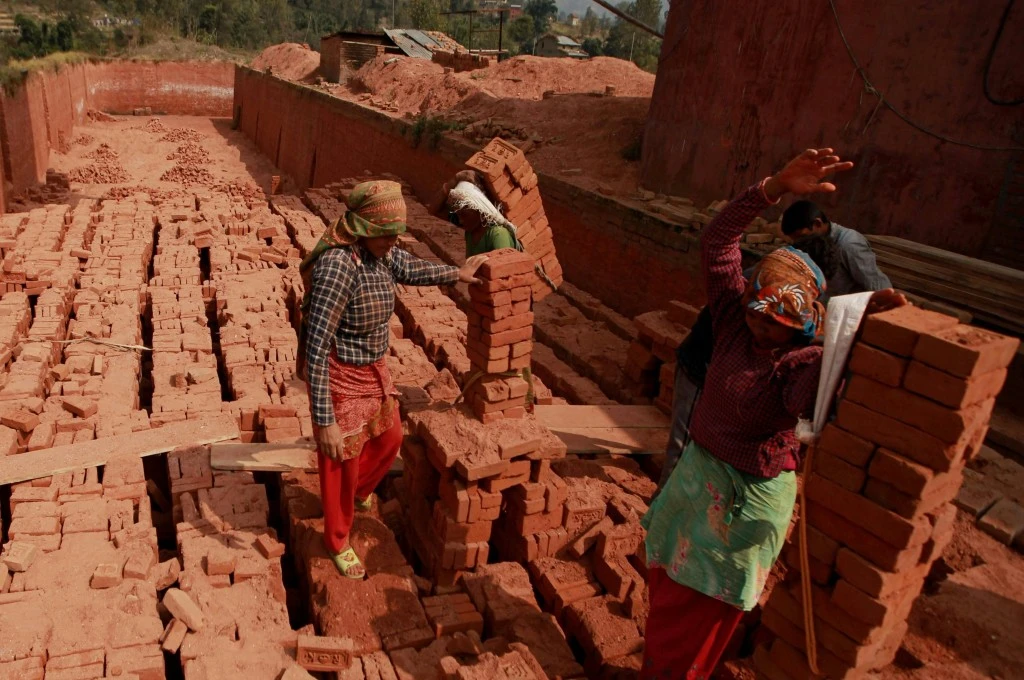Savita, a farmer in rural Maharashtra, tends to her farm from sunrise until sunset to provide a simple meal for her children in the evening. Saloni, a bank manager in Delhi, travels an hour to reach her office every morning and spends another hour commuting back in the evening. Saloni’s domestic staff worker, Seema, cooks for the family and cleans their home, clothes, and utensils to earn a living for her own family of two sons and three daughters. All three of these women are a part of India’s labour force.
Labour force participation rate (LFPR) is defined as the percentage of people in the labour force (that is, working, seeking, or available for work) among the population. LFPR includes those who are self-employed (for instance, in agriculture, forestry, fishing, etc. for their own consumption), salaried employees or casual labour, and those who are unemployed.
What’s happening with India’s female labour force participation rate (FLFPR)?
India is home to approximately 663 million women, of which approximately 450 million women fall in the working age of 15–64 years. India’s FLFPR had been showing a sharp declining trend over the last three decades, from 30.2 percent in 1990 to hitting an all-time low of 17.5 percent in 2018, as per reports by World Bank, Centre for Monitoring Indian Economy (CMIE), and Periodic Labour Force Survey (PLFS). (The PLFS is India’s official labour force survey, and became an annual exercise only in 2017–18.)
Unlike the downward trend India has seen in the FLFPR since the 1990s, the 2020–21 PLFS1 for all ages shows a significant improvement in the last three years, going up from 17.5 percent to 24.8 percent (for women aged 15 and above, the rate increased from 23.3 percent in 2017–18 to 32.8 in 2020–21). A recent press release from the Ministry of Finance highlights that this improvement can be attributed to a range of factors, including progressive labour reform measures, better employment trends in the manufacturing sector, increasing share of self-employed people, and a rise in formal employment levels.
The global FLFPR is 52.4 percent (ages 15+), and has been at a similar level for the last three decades. However, in developing countries and emerging economies, there is a significant variation. In the Middle East, North Africa, and South Asia, this rate is approximately 25 percent, whereas it reaches up to approximately 66 percent in East Asia and sub-Saharan Africa. Interestingly, we don’t see such a trend variation in men’s LFPR, which stands at approximately 80 percent across economies.
Why has India’s FLFPR been low?
Informality
According to the PLFS, we have approximately 166 million women either working, seeking work, or available for work. Out of the population of working women, more than 90 percent work in the informal sector. They are either self-employed or casual workers, predominantly in agricultural and construction sectors. This means that they face increased exploitation, poor working conditions, lack of mobility, and higher risk of violence. This discourages women from entering the workforce.

Patriarchal social norms
There is low support in society for working women. This arises from patriarchal structures, which dictate that women prioritise their domestic responsibilities over professional aspirations. The disproportionate burden of household duties, accompanied by mobility and safety constraints, results in women forgoing their employment. A recent NITI Aayog report states that women in India spend 9.8 times more time than men on unpaid domestic chores (against a global average of 2.6 as reported by UN Women). Globally, unpaid care work is the key reason that women are outside the labour force whereas for men it is “being in education, sick, or disabled”. Additionally, deep-rooted social norms and lack of agency leave women with little choice in their employment decisions.
A large proportion of educated women are full-time housewives engaged in domestic household chores.
A large proportion of educated women are full-time housewives engaged in domestic household chores such as cooking, cleaning, and childcare. Their services are not paid for and neither are they accounted for in the FLFPR. Their economic output is not included in the GDP either. A 2023 report by State Bank of India suggests that unpaid women’s total contribution to the economy is around INR 22.7 lakh crore—approximately 7.5 percent of India’s GDP.
Economists have argued that India’s FLFPR is not as low as commonly assumed, and that including unpaid work in the calculation will improve this number. A working paper by the Economic Advisory Council highlights that the PLFS does not capture “economically productive work done by women like poultry farming, milking of cows, etc. as part of their domestic duties”. Upon correcting for this omission, the Economic Survey 2022-2023 estimated an FLFPR of 46.2 percent for 2020-21.
While we need to figure out ways to measure unpaid care work, ensure better estimations, and acquire timely, high-quality data from international and national statistical agencies, this may also reinforce patriarchal norms about women’s roles in the household and limit the opportunities for women who would like to work outside of their homes.
Structural changes in the economy are contributing to the recent rise in the FLFPR
Recent PLFS data shows a possible Feminisation U Hypothesis in female participation rates in India. This hypothesis was created on the basis of a cross section of 169 countries from 1990 to 2013. It shows that the early stages of economic growth are accompanied by a decline in female labour force participation. This is because women who were previously working to make ends meet can now opt out of the workforce due to rising household incomes. However, as incomes rise further, women tend to become economically active again. And this increase in economic activity tends to be accompanied by a drop in both fertility rates and the gender education gap.
Despite a significant positive trend, women’s labour force participation remains considerably low in comparison to that of men.
The recent improvement in India’s FLFPR can be explained by the structural changes the nation is experiencing, including a decline in fertility rates and improvement of women’s education. Despite this significant positive trend, women’s labour force participation remains considerably low in comparison to that of men (57.5 percent). Moreover, it represents the underutilisation of their capacity, given that approximately 70 percent of all Indian women of working age remain outside the labour force at present. Another concern is that the increase in women’s share in the labour force post pandemic is primarily driven by rural women joining the workforce, out of necessity, as self-employed workers.
What could full female participation in the workforce look like for India?
Unlocking the full potential of women in our workforce would provide multiple times the return on initial investments made by the government and businesses. As per McKinsey Global Institute’s report, India could achieve an 18 percent increase over business-as-usual GDP (USD 770 billion) by 2025.
The real economic, business, and societal value of the participation of women in India’s labour force can only be achieved through the active involvement of women across the formal economic ecosystem. Studies have shown how, in advanced economies, women in professional occupations outsource their care work, which further results in employment and income generation for more people. Similarly, Indian women and the economy will immensely benefit from solutions that focus on improving the participation of women in the formal economy. This will include reducing, redistributing, and rewarding unpaid care work.
—
Footnotes:
- The PLFS surveyed 1,00,344 households (55,389 in rural areas and 44,955 in urban areas) and 4,10,818 people in the period from July 2020 to June 2021 to arrive at these numbers. Therefore, its results should be viewed as estimates and not as absolute figures.
—





